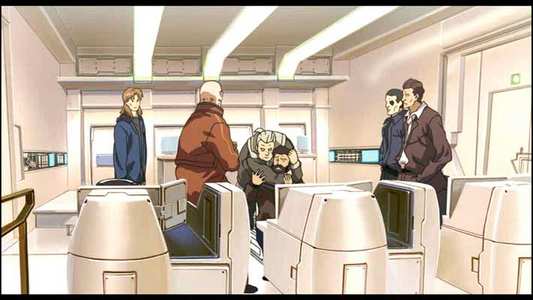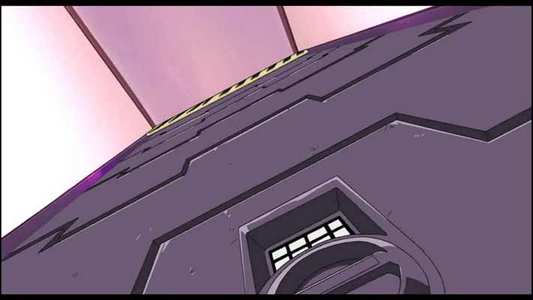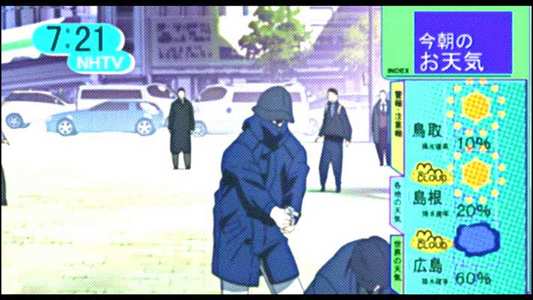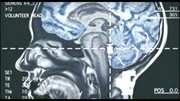Review of Ghost In The Shell: Stand Alone Complex - The Laughing Man
Introduction
When it comes to Ghost In The Shell, I had thought that the proverbial fat lady had belted out her final aria, at least for the foreseeable future. Cyberpunk fans have had rich pickings indeed over the last few years, with the first Stand Alone Complex series immediately followed by the second, the sequel to original hit film, and last August, the Stand Alone Complex - Solid State Society film. I should have seen the signs when I described Solid State Society as the Third Gig, only without the filler and the Stand Alone episodes, as both series of Stand Alone Complex are ripe for similar treatment. Actually, I should have paid more attention when the Laughing Man and Individual Eleven movies were released in Japan a couple of years ago, but in my naiveté, didn`t consider that Bandai in the US, and Manga in the UK would opt to release them.
The first series of Ghost In The Shell: Stand Alone Complex offered around 10 hours, 26 episodes of cyberpunk sci-fi action. It`s a brilliant, awesome and fiendishly intelligent anime show that I just can`t fault, alternating an overarching storyline about an elusive cyber-terrorist hacker know as the Laughing Man, with memorable one-off stories. If they had asked me to take the episodes and turn them into a movie, I would have failed utterly, as I just wouldn`t know what to leave out. It`s a good thing that they didn`t ask me then. To get to the heart of the Laughing Man storyline, means ditching the Stand Alone episodes, the credit sequences, and the Tachikoma Shorts, taking the footage that remains and picking out the vital threads of narrative, creating new animation to cover the seams, and putting it all together in a coherent and entertaining manner. It`s a sign of how dense and vital the narrative is that the resulting Laughing Man movie is still two and a half hours in length. The question is, does the Laughing Man movie present the story in a new, vital and indispensable way, or is it a quick cash-in?
Ghost In The Shell inhabits one of those strange new worlds we often hear tell of. Set in the not too distant future, the divisions between man and machine are blurring. AI is a reality, and life like androids do the menial jobs that humans used to. It isn`t unusual for the average citizen to be enhanced in some way with implants or prosthetics. For some the enhancements are to such a degree that little of the original human remains. Major Motoko Kusanagi of Section 9 is one such person, who since the age of 6 has been equipped with a totally cybernetic body. The only biological component left is her brain. The differences between man and machine becomes ever more meaningless when machines can develop personality. It also opens up a whole new area of criminal activity, when cybernetically enhanced senses can be fooled by an enterprising hacker, or worse their brains themselves can be hacked into, subverting the innocent by reprogramming their `ghosts`. In the light of such terrifying possibilities, a special unit is created to head off the threat of such cyber-crime. Section 9 led by Aramaki is at the forefront of combating the new cyber criminals.
Section 9 operative Togusa gets a message from an old friend in the police force, hinting at a scandal about to break. The next morning, his friend is dead, killed in a car crash. Looking further into the incident, Togusa finds links to the old Laughing Man case. Six years previously, a faceless hacker kidnapped the head of Serano Genomics, a major micromachine manufacturer, and then proceeded to blackmail a host of high profile medtech companies. No one ever knew what this hacker looked like, he hacked surveillance systems and cyberbrains alike, and the only description of him that anyone could ever remember was a distinctive logo. He vanished after the kidnapping was blown live on air, and the police spent the following six years and significant sums of money, in a fruitless investigation. Togusa`s friend had uncovered high-level corruption that saw the police colluding with Serano Genomics to illicitly use Interceptors, highly advanced surveillance implants, without the knowledge or permission of its men. A carefully orchestrated press conference, designed to quickly get rid of a few sacrificial lambs, blows up when the Laughing Man returns to tear away the lies, deceit and corruption that clouds the issue. Section 9 are soon on the case, hunting the elusive hacker, but the more they investigate, the more they realise that the lies stretch all the way up to the highest levels of government, and the deeper they go, the more lethal danger they face.

Video
Creating the Laughing Man movie meant going back to the original episodes and finding the relevant footage, creating new animation where necessary, and giving the finished product a general spruce up to get it to theatrical standards. If you`ve seen the series, you should know what to expect in terms of animation, but you will never have seen the first series look this good before, especially since Manga Entertainment made a hash of the series volume releases. Those first discs suffered from digital artefacts, pixellation, and in the final two volumes NTSC-PAL ghosting.
The image on this disc is taken from a new HD master, and the picture is clear, sharp and crisp. The colours are more vivid, the detail is excellent, and on the whole the film looks more vibrant and stronger than the series. My only gripe was a spot of aliasing during the start of the film, but there was also the utter joy of seeing the final act of the film, edited from the final two discs of the series, in outstanding PAL resolution, smoothly animated and free of any ghosting whatsoever. Manga have really done well with this transfer, but it only serves to show how much they goofed with the series.

Audio
You have the choice of DD 5.1 and DD 2.0 English and Japanese. Making the film also meant reworking the dialogue to suit the new focus of the story, as well as making sure the music and the effects remained consistent. It`s still the same immersive experience as before, with resounding action sequences, and a sublime score from Yoko Kanno. In Japan, the original cast came back to do the additional ADR for the film, but alas that wasn`t the case for the English language version.
For the film, we get a new dub, from a new cast recorded at Ocean Studios in Canada. Don`t get me wrong, as it`s a good dub, with acceptable performances from all involved. But when it comes to Ghost In The Shell, Mary Elizabeth McGlynn is Motoko Kusanagi, Richard Epcar is Batou, Crispin Freeman is Togusa, and William Knight is Aramaki. The original cast own those roles, and hearing them recast just sounds wrong, even for an original language fanatic like me. If you are a dub fiend, then this may be a deal breaker for you.

Features
The disc gets a nice set of holographic animated menus, perfectly suited to the movie. You`ll also find trailers for Bleach, Karas, Vexille, GITS:SAC 2nd Gig, and the Naruto movie.
There is a new Tachikomatic short animation featuring the cute droids, as they get all self-referential for 3 minutes.
The most substantial offering is the Stand Alone Complex Archives, which offers a 32-minute making of featurette. Presented by the Japanese voice of Motoko, Atsuko Tanaka, she interviews director Kenji Kamiyama, and takes us on a retrospective of the making of the first series, as well as a look at how the movie was put together.
Incidentally, the Region 1 release is on two discs, separating the feature from the extras to allow for an English DTS track on the film. The UK release is on just one, but the content is identical.

Conclusion
Well, it`s not a cynical cash in, but I`m not sure that the Laughing Man movie works. I`m not going to bother reviewing the content, as my reviews of the series discs already do that. The attempt to create a separate, discrete movie that retold the Laughing Man arc in a succinct and entertaining way was a laudable one, but one that was hamstrung by the episodic nature of the show. It meant cutting swathes of the story out, brutally editing it down to the minimum required. Less actually, as one whole episode was dropped, and replaced by a newly animated, 30-second scene of exposition. It also meant interleaving storylines from different episodes in a way to get a sense of flowing narrative. But you can`t get away from the stop start nature of the show, and the film comes across in 5 distinct arcs, loosely hanging together by a few strings of hastily weaved plot. A movie needs consistent character arcs, and a strong cohesive story, and you can`t easily get that from 26 episodes of television and a bit of creative editing.
The Laughing Man does try though, and if there is a consistent arc to the film, it`s Togusa, who initially discovers the Laughing Man case, and follows it through to the end. It does come at the expense of the other characters, and it does often feel like the Major is a guest star in her own show. Worst hit of all are the Tachikomas, who in the series had an intricate and detailed character development during the show. All of that is dropped in the film, we hardly see them, and when we do it`s already time to say goodbye. Their departure from the scene is rewritten to contrive a link to the Laughing Man, and their ultimate sacrifice loses all its poignancy.
People may also get restless during the first hour, as there is a whole load of exposition needed to set things up. The balance between plot and action that works well in a 24-minute format is fairly out of kilter here. There is a place for the Laughing Man film, as even I have found myself losing track of plot points over a 26-episode run. Having the arc summarised in a single film certainly makes sure that all the key moments in the Laughing Man story remain at the forefront. It`s a novel and interesting way to retell the story, which while it doesn`t succeed, is certainly something that long-term Ghost In The Shell fans can appreciate. Newcomers to the franchise will be better advised to start with the series, as The Laughing Man`s structural flaws as a film stand out to its detriment.
The Laughing Man is a bold experiment that ultimately fails, but it certainly bodes well for the forthcoming Individual Eleven film, similarly put together from the 2nd Gig. The 2nd Gig was a more cohesive piece of storytelling in its own right, the delineation between Stand Alone episodes and story arc was much blurrier than in the first season, and the narrative and character arcs built a much stronger continuity. It means that finding the relevant story elements will probably be a nightmare, but the resulting movie should be far more robust and consistent a viewing experience. As for The Laughing Man, the final score is for fans familiar with the story. Newcomers should knock a mark or two off.














































Your Opinions and Comments
Be the first to post a comment!